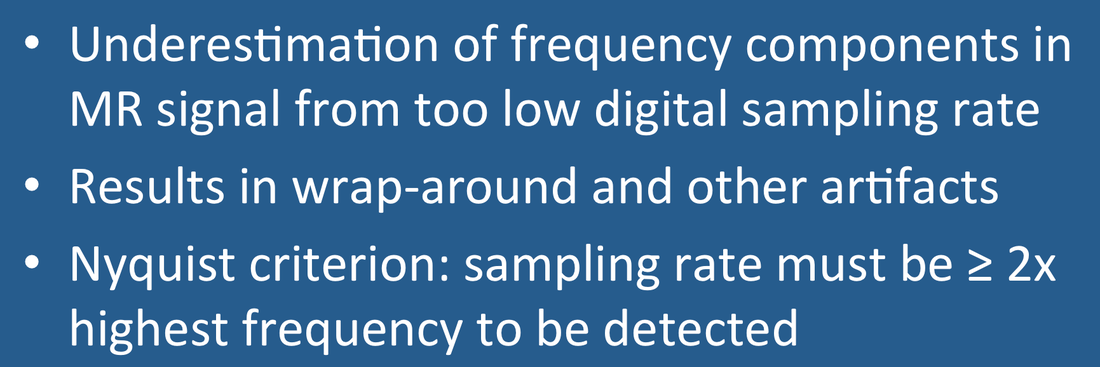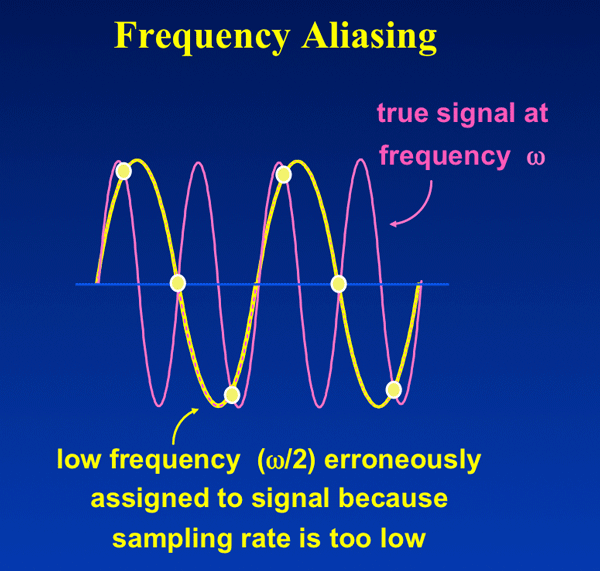|
Aliasing refers to the incorrect measurement of a signal's frequency due to an inadequate digital sampling rate. If a signal is not sampled using enough data points, its true frequency will be underestimated. This falsely estimated signal will be indistinguishable from (i.e., be an "alias" to) another signal having that true lower frequency.
To properly measure a signal, the digital sampling rate must be at least twice the highest frequency contained within that signal. This is known as the Nyquist sampling theorem.
|
|
|
The aliasing phenomenon is not confined to MRI but is present in all types of technology, explaining audible distortions of sound, moire patterns in photos, and unnatural motion in cinema. The "wagon wheel effect" is a familiar example of aliasing. In this optical illusion, spokes on a wheel appear to rotate at different rates or even backwards depending on the digital frame rate of the video.
|
Aliasing is an important phenomenon in MR. It is the source of a common artifact (phase wrap-around) discussed in the next several Q&A's. Other types of aliasing artifacts include contamination of spectra from distant voxels in MRS and false measurement of flow velocities or flow direction in MRA. The aliasing phenomenon can used to advantage, however, forming the basis of parallel imaging techniques such as SENSE and GRAPPA.
Advanced Discussion (show/hide)»
No supplementary material yet. Check back soon!
References
"Aliasing". Wikipedia, the Free Encyclopedia.
Oldhasusen BA. Aliasing. (Lecture notes for Vision Science course, UC Davis, 10 Oct 2000, available on-line)
"Aliasing". Wikipedia, the Free Encyclopedia.
Oldhasusen BA. Aliasing. (Lecture notes for Vision Science course, UC Davis, 10 Oct 2000, available on-line)

